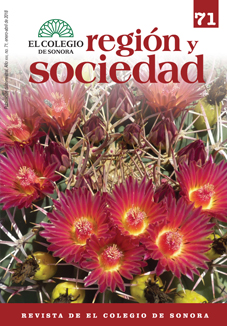 |
 |
 |
 |
 |
 |
 |
 |
 |
 |
 |
 |
Abstract
The purpose of this study was to compare, via a dominance analysis, two subjective and three objective indexes by using the standard deviation, critic and entropy methods in order to determine the dominant index. The methodologies used are based on the index theory and the dominance analysis in network theory. One of the subjective indexes turned out to be the dominant one, which uses basic services in resource dimension for a dignified life. This result, like others, is constrained by the inability of indexes (aggregates of two or more variables) to be subject to an order relation as the one established in the number line; for this reason they are empirical and only indicate certain regularity. The contribution here is the diversity of human development indexes used, which lead to combine statistical-mathematical techniques in order to compare them. Basic services prove to be a reasonable option for a dignified life in human development.
References
Aznar, Jerónimo y Francisco Guigarro. 2012. Nuevos métodos de valoración: modelos multicriterio. Valencia: Universitat Politécnica de Valencia. https://riunet.upv.es/bitstream/handle/10251/19181/nuevos%20M%C3%89todos%20de%20dvaloraci%C3%93N%20-20modelos%20multicriterio.pdf?sequence=1
Cherchye, Laurens, Erwin Ooghe y Tom Van Puyenbroeck. 2008. Robust human development rankings.The Journal of Economic InequalityVI (4): 287-321.
De la Torre, Rodolfo y Hector Moreno. 2010. Advances in sub national measurement of the human development index: the case of Mexico. UNDP. Human development research paper 2010/23.
Decancq, Koen y María Lugo. 2013. Weight in multidimensional indices of wellbeing: an overview. Econometrics Review XXII (1): 77-34.
DEMYC. 2015. Informe del desarrollo humano de México. www.chapingo.mx/dicifo/demyc/uac/bases/memo/memoria.html (9 de enero de 2015).
Diakoulaki, Danae, George Mavrotas y Lefteris Papayannakis. 1995. Determining objective weights in multiple criteria problems: the critic method. Computers and Operations Research XII (3): 763-770.
Foster, James E. y Amartya Sen. 1997. The welfare basis of real income comparisons: a survey. Journal of Economic LiteratureXVII (1): 1-45.
Frones, Ivar. 2007. Theorizing indicators: on indicators, signs and trends. Social Indicators Research LXXX (1): 5-23.
Gaye, Anie y Shereyasi Jha. 2010. A review of conceptual and measurement innovations in national and regional human development reports, 1998-2009. UNDP. Human development report, research paper 2010/21.
Hurdrliková, Lenka. 2013. Composite indicators as a useful tool for international comparison: the Europe 2020 example. Prague Economic Papers XXII (4): 459-473.
Kovacevic, Milorad. 2010. Review of HDI critiques and potential improvements. UNDP Human development research paper 2010/33.
Munda, Giuseppe y Michela Nardo. 2003. On the methodological foundations of composite indicators used for ranking countries. Joint Research Centre of the European Communities 1-19.
OECD. 2008. Handbook on constructing composite indicators: methodology and user guide. Joint Research Center of the European Commission.
PNUD. 1990. Desarrollo humano, informe 1990. Bogotá: Tercer Mundo Editores.
Podvezko, Valentinas. 2011. The comparative analysis of MCDA methods SAW and COPRAS. Inzinerine Ekonomica-Engineering Economics XXII (2): 134-146.
Ramírez, M. A. 1999. Índice de desarrollo humano del estado de Guanajuato. Revista del Centro de Desarrollo Humano de Guanajuato (3): 34.
Searle, Shayle R. 1982. Matrix algebra useful for statistics. Nueva York. John Wiley and Sons.
Sharpe, Andrew y Andrews Brendon. 2012. An assessment of weighting methodologies for composite indicators: the case of the index of economic well-being. Otawa: Centre of Study of Living Standars.
UNDP. 2010. Human develompment report 2010. Oxford: Oxford University Press.
UNDP. 1991. Human develompment report 1991. Oxford: Oxford University Press .
Veres Ferrer, Ernesto J. 2014. Medición del desarrollo humano: un índice alternativo al IDH-2010. Especial referencia a los países latinoamericanos. Investigación Económica LXXIII (288): 87-115.
Zardary, Hassan N., Kamal Ahmed, Sharif Moniruzzaman S. y Sulkifli Bin Y. 2015. Weighting methods and their effects on multi-criteria decision making model outcomes in water resources managament. Nueva York: Springer.
Zeleny, Milan y James Cochrane. 1982. Multiple criteria decision making. Nueva York: McGraw Hill.

This work is licensed under a Creative Commons Attribution-NonCommercial 4.0 International License.
Copyright (c) 2017 José Luis Romo Lozano, Francisco José Zamudio Sánchez, Gladys Martínez Gómez, Luz Judith Rodríguez Esparza







